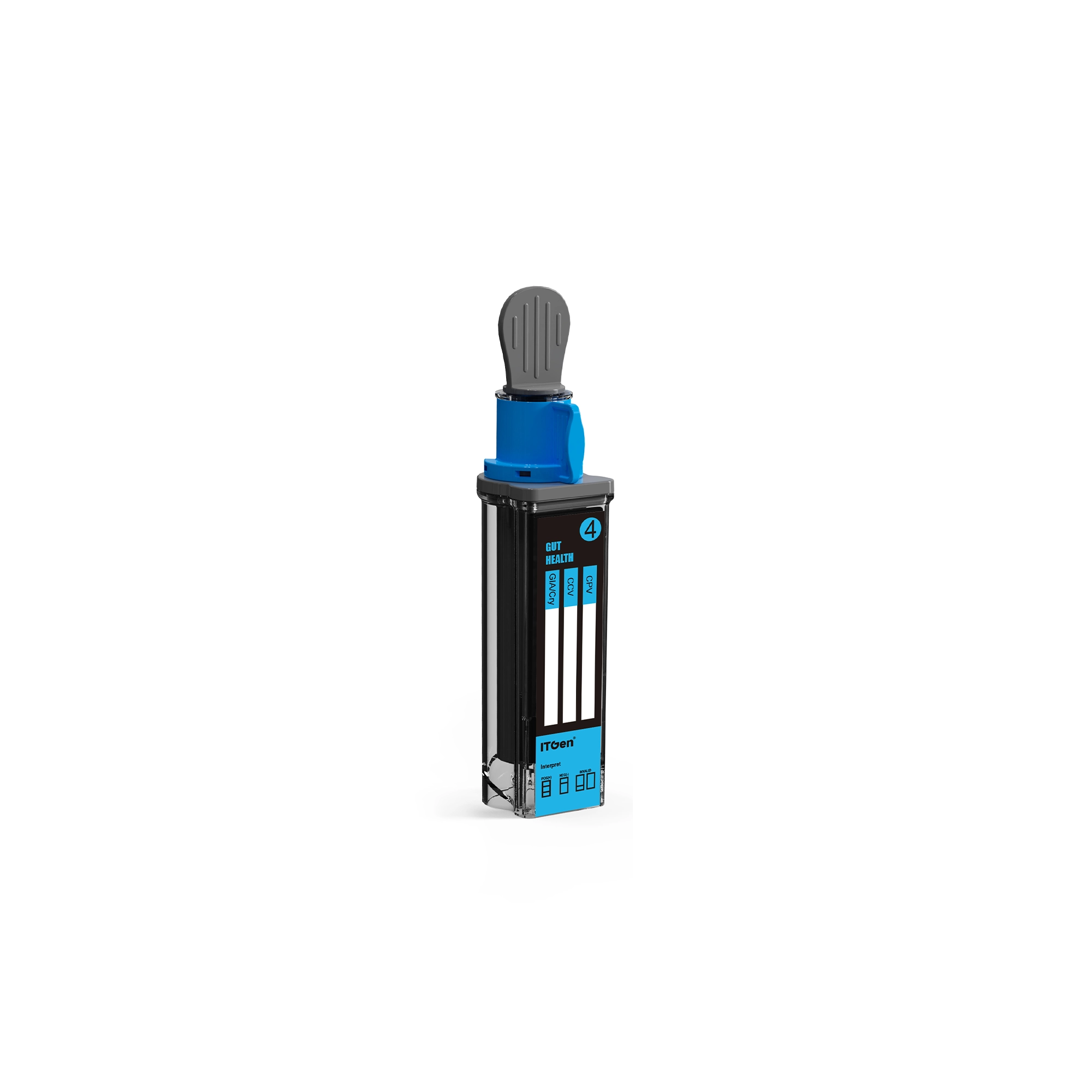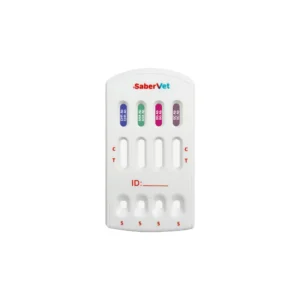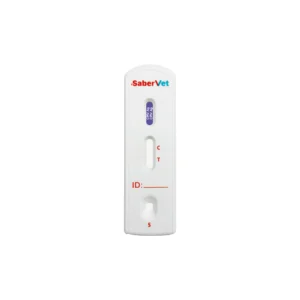Description
Product Parameters
| Production Name | ITGEN Canine Gastrointestinal Disease (CGD)-4 Antigen Rapid Test Kit |
| Target Analyte | Canine Parvovirus/Corona Virus/Giardia/Cryptosporidium Antigen |
| Specimen Type | fresh feces or rectal swab sample |
| Storage Temperature | 4-30°C |
| Result Time | 5-10 Minutes |
| Packaging | Individually Sealed Tests |
| Packaging Specification | 10T |
| Shelf Life | Up to Expiration Date Indicated on Package |
Product Specifications
| Sensitivity | 98.63%/97.5%/98.3%/98% |
| Accuracy | 97.65%/98%/97.96%/98.2% |
| Format | Cassette |
| Detection Method | Chromatographic Immunoassay/Lateral Flow Immunoassay |
| Specificity | 98.20% |
| Reading Time | 5-10 Minutes |
| Usage | Veterinary Diagnostics |
Contents
| Contents | Number |
| Test device | 1 |
| Swab | 1 |
| Buffer tube | 1 |
| Package insert | 1 |
Description
ITGEN Canine Gastrointestinal Disease (CGD)-4 Antigen Rapid Test Kit provides an accurate basis for rapid diagnosis and symptomatic treatment of dogs experiencing non-specific gastrointestinal symptoms such as vomiting, diarrhea, fever, and dehydration. The research and development of this project stems from the clinical reality of the high incidence of canine gastrointestinal diseases and the obvious trend of mixed infections. Traditional single-item testing is time-consuming and labor-intensive, and cannot meet the actual needs of frontline diagnosis and treatment for rapid, multi-target screening. Multi-pathogen co-infection often leads to complex conditions, difficult diagnosis, and increased risk of misdiagnosis. A simple and efficient comprehensive detection solution is urgently needed. The pathogens involved each have their own pathogenic mechanisms: CPV attacks intestinal crypt cells, causing severe necrotizing enterocolitis and immunosuppression, CCoV destroys the villi of the small intestine, causing absorption disorders, CRV mainly causes diarrhea and is prone to secondary infection in puppies, and Giardia causes chronic diarrhea and malnutrition by parasitizing the small intestinal mucosa. The combination of multiple pathogens can significantly aggravate the condition and the risk of transmission. Through integrated detection design, this kit can complete the interpretation of multiple indicators in one step, shorten the diagnostic process, improve treatment efficiency, and meet the needs of refined diagnosis and treatment.
How to use?
Check the product contents and make sure the test operation is under the room temperature (15–30℃) before testing.
Unseal the extraction tube containing the buffer.Place the extraction tube in the workstation.
Use the swab to collect some fresh canine feces or fecal sample from its rectum. And then put the swab into the buffer.
Rotate the swab more than 10 times.Close the cap of the buffer tube.
Take the test device out of the aluminum foil bag and place it on a clean and flat table. Add three drops (about 90 μL) of specimen (mixed sample) vertically into the specimen well(S) of the test device.
INTERPRETATION OF RESULTS
Positive (+): The presence of both C line and T line, regardless of T line being strong or faint.
Negative (-): Only clear C line appears.
Invalid: No colored line appears in C region, regardless of T line’s appearance.






